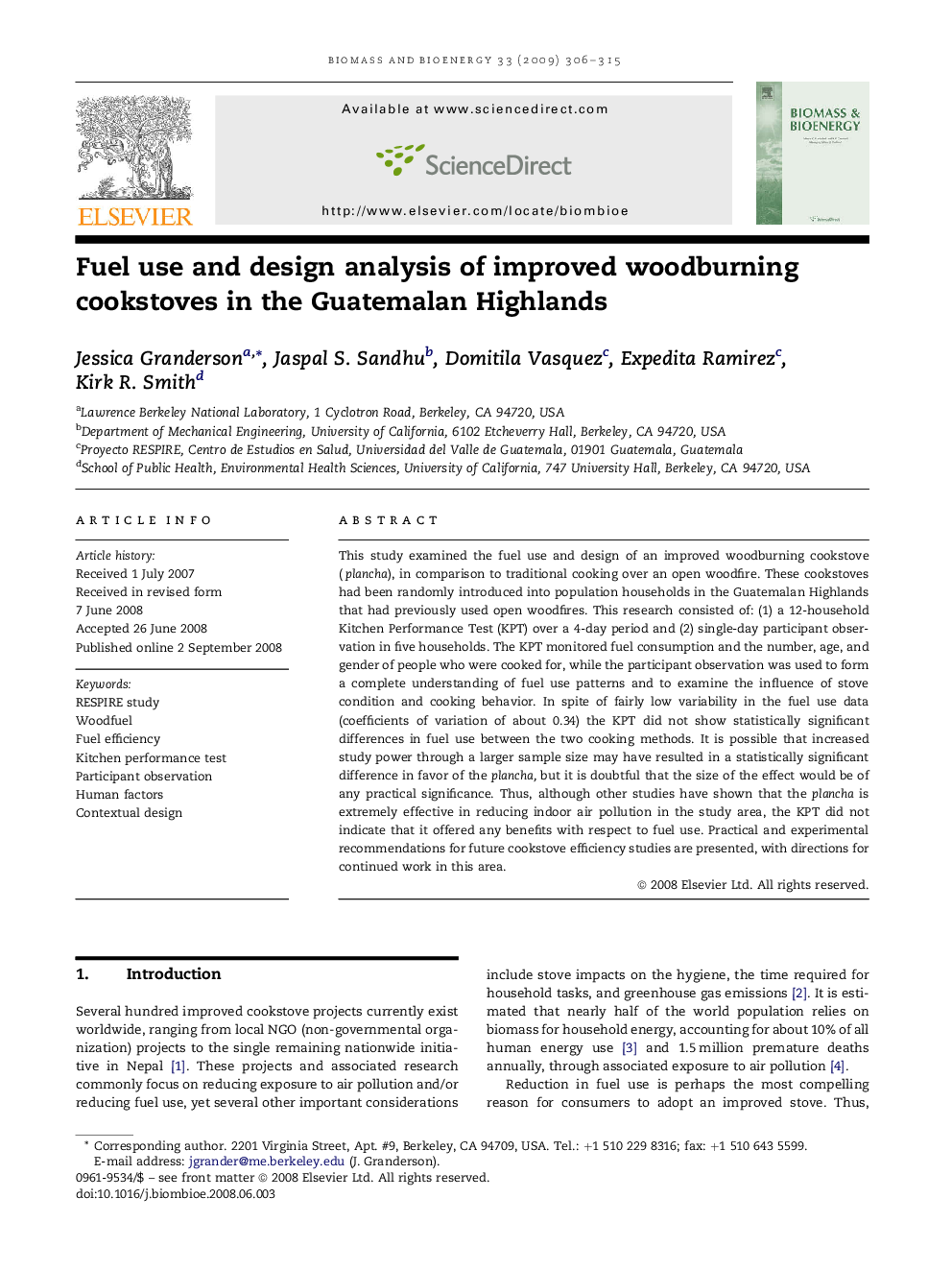| Article ID | Journal | Published Year | Pages | File Type |
|---|---|---|---|---|
| 678546 | Biomass and Bioenergy | 2009 | 10 Pages |
This study examined the fuel use and design of an improved woodburning cookstove (plancha), in comparison to traditional cooking over an open woodfire. These cookstoves had been randomly introduced into population households in the Guatemalan Highlands that had previously used open woodfires. This research consisted of: (1) a 12-household Kitchen Performance Test (KPT) over a 4-day period and (2) single-day participant observation in five households. The KPT monitored fuel consumption and the number, age, and gender of people who were cooked for, while the participant observation was used to form a complete understanding of fuel use patterns and to examine the influence of stove condition and cooking behavior. In spite of fairly low variability in the fuel use data (coefficients of variation of about 0.34) the KPT did not show statistically significant differences in fuel use between the two cooking methods. It is possible that increased study power through a larger sample size may have resulted in a statistically significant difference in favor of the plancha, but it is doubtful that the size of the effect would be of any practical significance. Thus, although other studies have shown that the plancha is extremely effective in reducing indoor air pollution in the study area, the KPT did not indicate that it offered any benefits with respect to fuel use. Practical and experimental recommendations for future cookstove efficiency studies are presented, with directions for continued work in this area.
